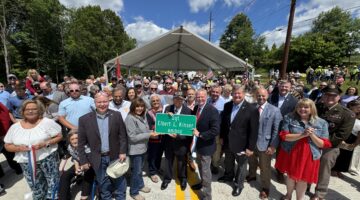The U.S. Department of Energy estimates that roughly 25% of electric utility employees will retire over the next five years. As a considerable portion of the nation’s workforce prepares to retire, “doing more with less” is an attitude that many companies are pushing to adopt. When they leave the industry, they take an inherent knowledge of the utility system infrastructure with them – an inherent knowledge that extends beyond procedures, schematics or operations manuals. Knowing this, how can utilities combat the approaching gap in knowledge and skill?
A scalable approach to staffing.
Companies face a common dilemma when it comes to staffing. On one hand, overstaffing to prepare to meet peak project demands is proactive, but isn’t economical or sustainable. On the other hand, understaffing inevitably taxes the current workforce and leads to burnout, fatigue and employee turnover. To avoid both of these extremes while still addressing the staffing dilemma, supply chains are considering implementing an Engineer of Choice (EOC) program or an Engineering Partner of Choice (EPOC) program.
The most common industry approach is the EOC program which gives utilities the ability to source a broad spectrum of engineering and design resources at competitive rates under an umbrella agreement with several pre-qualified engineering firms. The benefits of an EOC program include time-saving options relative to procurement and legal processes.
An EPOC program is much more involved and robust, and optimizes the cost for both entities involved. An EPOC is defined as an exclusive partnership with an engineering firm inclusive of a base level of hours and scalable resources. By considering a variety of contracting methods, such as a sliding rate scale, engineering staff hours can be aligned with years of experience and type of expertise to optimize costs. This approach fosters an environment of strategic discussion and cost savings while still providing opportunities for off-ramps and competitive bidding.
Both programs offer the benefits of a partnership with an external engineering company which allows staffing levels can be adjusted quickly and easily. These approaches provide a better alternative to common staffing concerns in a rapidly shifting environment.
Time-saving technology.
As project development and engineering technologies continue to advance, utilities are finding ways to accomplish more with less staff. For example, the use of drones and more sophisticated 3D modeling can make design processes more efficient and less costly. Drones that access confined spaces or an inexpensive laser scan can save man hours or expedite schedule. Project management tools, such as Kiewit Management System Powered by InEight™ and its full project lifecycle capabilities, can help identify any pain points before they escalate into costly delays. While it might not be feasible for utilities to fully invest in this these types of technology on their own, they can be accessed through cost-effective partners like Kiewit.
Integrated contract models.
Sometimes utility work needs to get done faster than anticipated. The overall integrity of existing utility systems are declining due to a variety of factors: age, natural disasters and changes in surrounding infrastructure. Engineering, procurement and construction (EPC) project delivery models can push projects over the finish line faster, with the same level of quality, than traditional design-bid-build methods. The EPC project approach could save utilities, on average, 10-15% in schedule alone. EPC also offers the added benefit of early collaboration between design, construction and operations, helping to eliminate costly changes later in the field. The ultimate value of the EPC project approach is derived from the efficient collaboration and coordination of personnel and resources throughout the engineering, procurement and construction phases. Even faster is implementing an EPC program for large ongoing capital spends. These programs, much like an EPOC, prequalify contractors and teams so that projects can be quickly bid and kicked off. The transmission and distribution market is one place where this approach has taken hold with solid results, which begs the question: are renewables next?
Tapping into specialized expertise.
As utility infrastructures are operating beyond their intended life and design, demands on the grid are increasing. Companies must implement solutions to offset this gap. Energy storage is just one of the rapidly evolving technologies that can contribute to more strategic investments and optimize system performance. We are getting ahead of these trends to help utilities best navigate new solutions and deploy them into the system at the right place and time.
About the Author:
Paul Conry, Vice President, Power Delivery
Paul Conry currently serves as the vice president for Kiewit Power Delivery. Paul has responsibility over the power delivery market strategy spanning Kiewit’s interests in power delivery engineering and consulting services, as well as construction and EPC services. Paul is tasked with the development of strategic client relationships and new business capture.
Looking for more information on our power delivery capabilities? Email your questions to [email protected].


